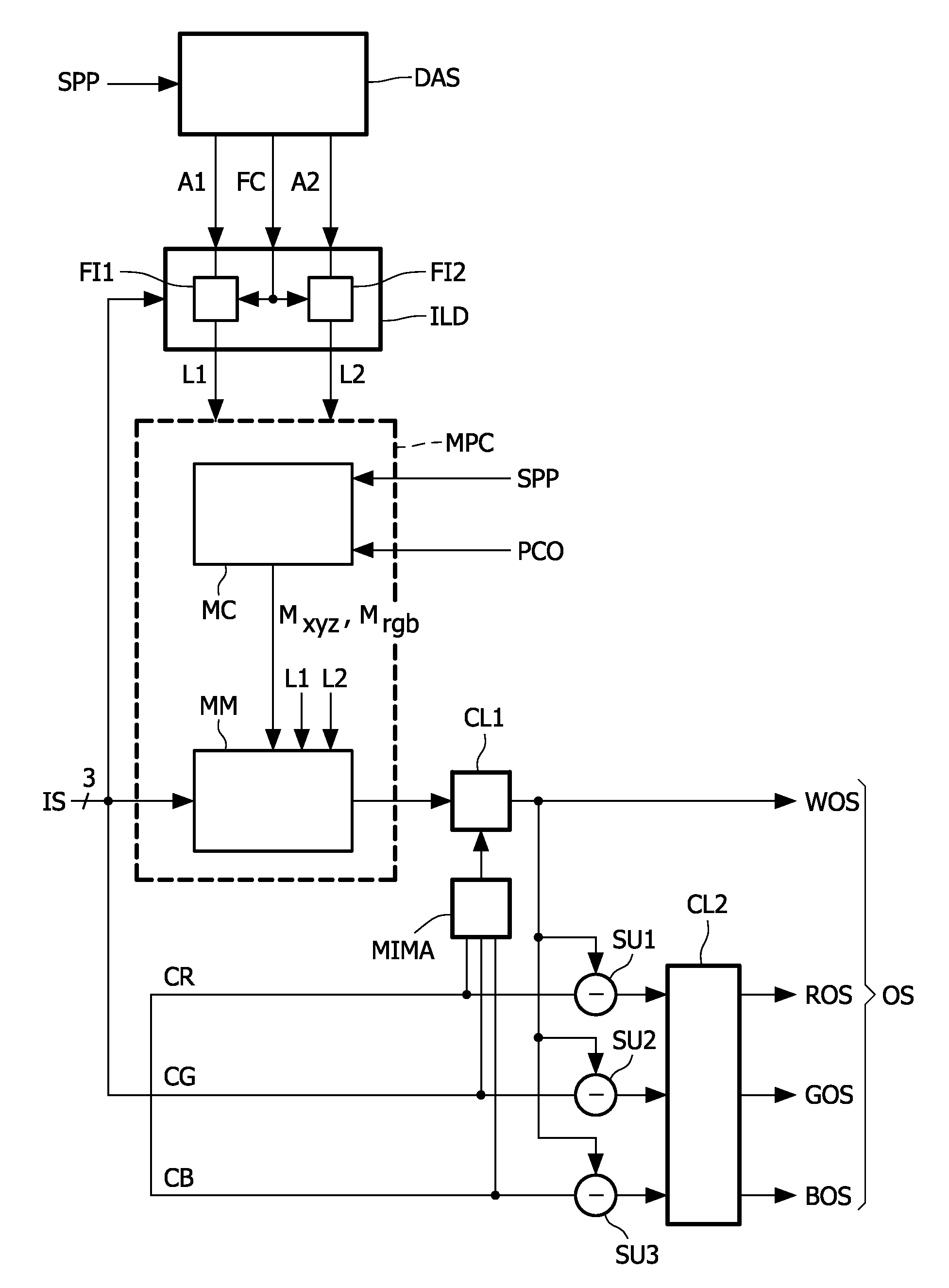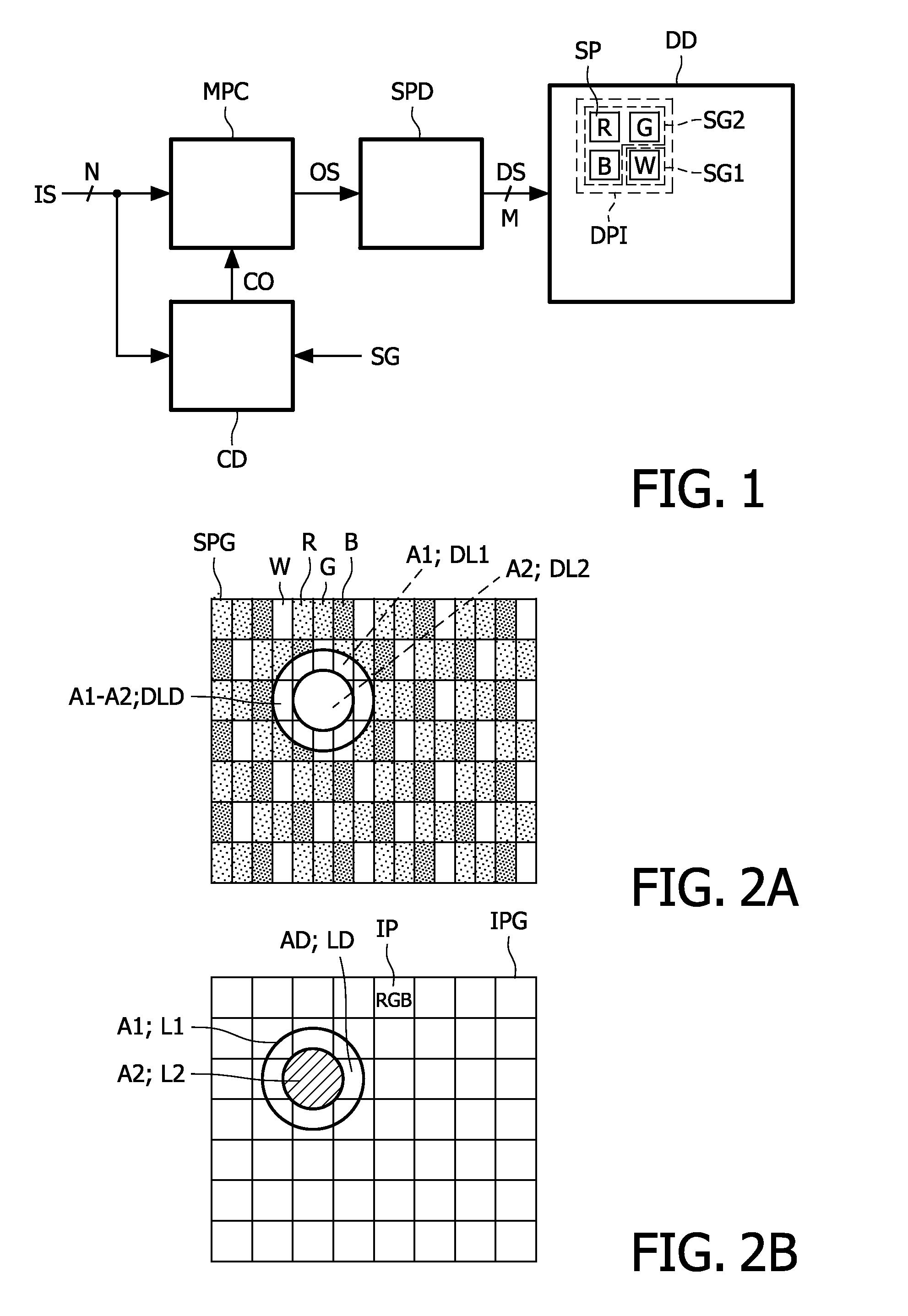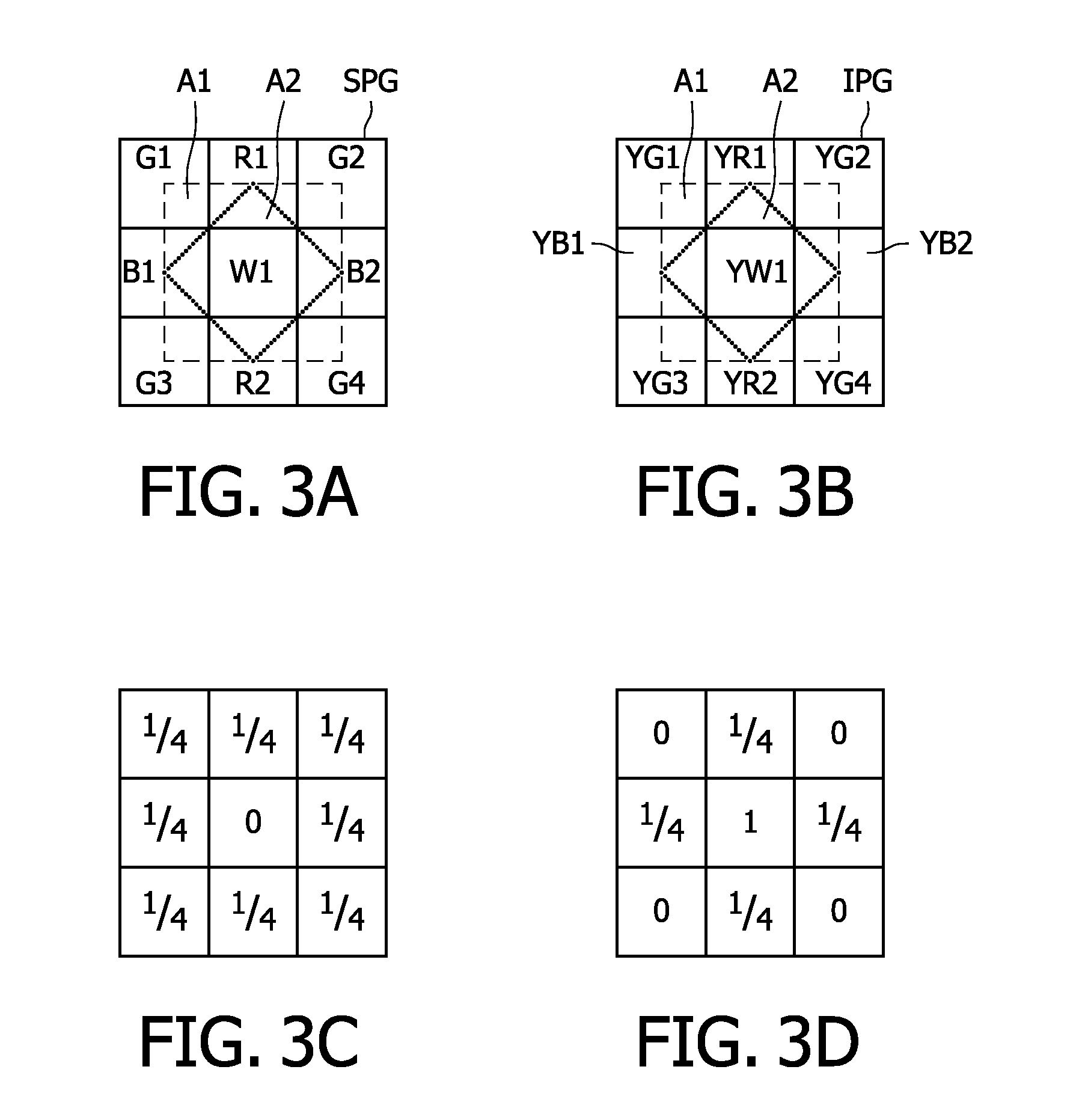Multi-primary conversion
a multi-primary conversion and conversion method technology, applied in the field of multi-primary conversion, can solve the problems of poor text readability, severe loss of aperture and consequently brightness, and reduced gamut, so as to improve the readability of text.
- Summary
- Abstract
- Description
- Claims
- Application Information
AI Technical Summary
Benefits of technology
Problems solved by technology
Method used
Image
Examples
Embodiment Construction
[0031]FIG. 1 schematically shows a block diagram of a converter for converting an input image signal defined with respect to N primaries into an output signal for M>N display primaries. In the now following, this is elucidated for a display device DD which has per pixel DPI for each display primary a single sub-pixel SP.
[0032]The converter receives an input image signal IS which per input pixel is defined by N values defining the contribution of the N input primaries. Usually, the input signal is an RGB signal defined with respect to the three primaries R (red), G (green) and B (blue). Any other representation of the input signal, such as for example YUV can be converted into an RGB signal. Usually these RGB primaries are the EBU primaries. However, any other signal defined with respect to another number N of other primaries could also be processed.
[0033]The converter supplies M drive signals DS to the display device DD to drive the M sub-pixels SP of the display pixels DPI of the d...
PUM
 Login to View More
Login to View More Abstract
Description
Claims
Application Information
 Login to View More
Login to View More - R&D
- Intellectual Property
- Life Sciences
- Materials
- Tech Scout
- Unparalleled Data Quality
- Higher Quality Content
- 60% Fewer Hallucinations
Browse by: Latest US Patents, China's latest patents, Technical Efficacy Thesaurus, Application Domain, Technology Topic, Popular Technical Reports.
© 2025 PatSnap. All rights reserved.Legal|Privacy policy|Modern Slavery Act Transparency Statement|Sitemap|About US| Contact US: help@patsnap.com



